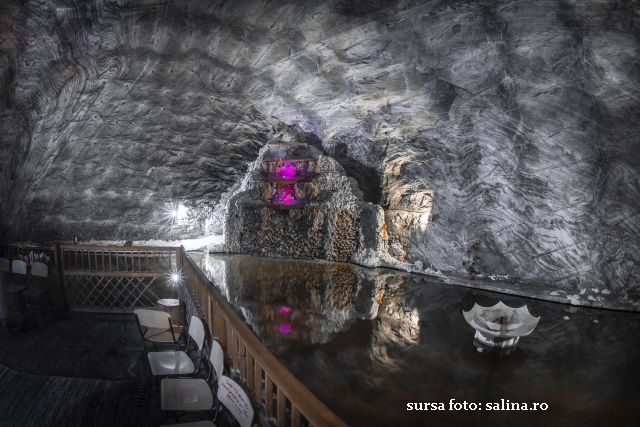Tourist attractions on Trotuș Valley
Today we're taking you to a region with less tourist interest, which however has a lot of promising things to discover

Daniel Onea, 25.01.2024, 14:00
Our first stop is the spa
resort of Slănic Moldova, known for its thermal waters, its clean air and
spectacular landscapes. From there we’ll head towards the Târgu Ocna salt mine.
And finally, we’ll also discover together old manors and castles that still
stand today.
Bacău County is a blessed
area, where nature has remained pristine, says Romulus Dan Bușnea, a local
travel guide, journalist, editor and inspector with the Bacău County Council
Service for Promoting Tourism and Mountain Rescue Coordination.
The county is relatively popular,
largely due to the Slănic Moldova and Târgu Ocna spa resorts. We have spa and
religious tourism opportunities in the region, which is home to over 60 wooden
churches dating back to the 17th and 18th centuries, all historical landmarks. Also
worth visiting are the monasteries of Cașin, Runc, Măgura Ocnei, Răducanu,
Răchitoasa, Ciolpani, Tisa-Silvestri and Bogdana, or the church in Borzești. The
Saint Barbara Orthodox Church in Târgu Ocna, located at a depth of 240 meters,
is also a unique place of worship.
The River Trotuș that crosses
Bacău County springs on the very border separating the historical provinces of Moldavia
and Transylvania. Trotuș Valley extends over 160km, says Romulus Dan Bușnea.
Trotuș Valley used to be compared
to the Loire Valley. There are a lot of tourist objectives in the area between
Harghita and Covasna counties. There are beautiful things to discover at every
stop, and in recent years we’ve witnessed a boom in the development of guesthouses
attracting tourists. On our way to Târgu Ocna, we can stop in Onești. The city
is not only the birthplace of the great ruler Stephen the Great, but also of
our great gymnast, Nadia Comăneci.
The towns of Dărmănești and
Comănești are equally popular destinations for families with children. There
are a lot of guesthouses that will help you discover the traditions of these
areas, which can also serve as a base for discovering the region.
Objectives in the two
cities include the Ghica Palace in Comănești, which is highly rated and
administered by local authorities. It is an ensemble comprising the 19th
century palace and park. Today it is home to the Dimitrie Ghica Ethnographic and
Folk Arts Museum. The palace was built in 1890 and was designed by Albert
Galleron, who also designed the Romanian Athenaeum and the National Bank. It is
a beautiful ensemble, close to another architectural gem, the Rail Station. Speaking about these palaces, it is also worth
mentioning the Ghica Castle and Ghica family park in Dofteana. The castle was
built in Romantic style, in a picturesque area, over the 19th and 20th
centuries by Nicolae Ghica, at the time governor of the National Bank of
Romania. The Ghica family included dozens of rulers and princes of Romania. The
park also includes a guesthouse reconstructing 19th century atmosphere and
hosting various events. From here we can travel to Tescani village and visit
the Rosetti Tescanu – George Enescu Cultural Center, with the statue and
memorial house of composer George Enescu. This is where the great composer
completed his lyrical masterpiece, Oedipus, devoted to Măriuca Contacuzino,
born Rosetti-Tescanu.
Târgu Ocna and Slănic
Moldova are spa resorts of national interest at the foot of Măgura mountain.
More details from Romulus Dan Bușnea.
There are countless
historical and religious monuments here, as well as the Trotuș salt mine, which
is not just a place for entertainment, but also specific treatments. You can spend
hours in the mine, and in the summer time you can relax in the salt-water pool
close to the mine. From Târgu Ocna, Slănic Moldova is a just a short 18km drive
away. Slănic Moldova needs no special presentation. It is one of the oldest
resorts in Romania, known as the pearl of Moldova. Its history knew a booming
development particularly in the Belle Epoque, over 1870-1880, right before the
Great War. It then stood out as a major spa resort. A total of 11 mineral
springs are now included in the tourist circuit, the first of which was
discovered in 1801 by serdar Mihalache Spiridon from Târgu Ocna. Its springs
have won numerous recognitions in international festivals and trade fairs.
Needless to say, the area is
also famous for its traditional cuisine, which you are invited to sample upon planning
a visit to the area. (V)






























